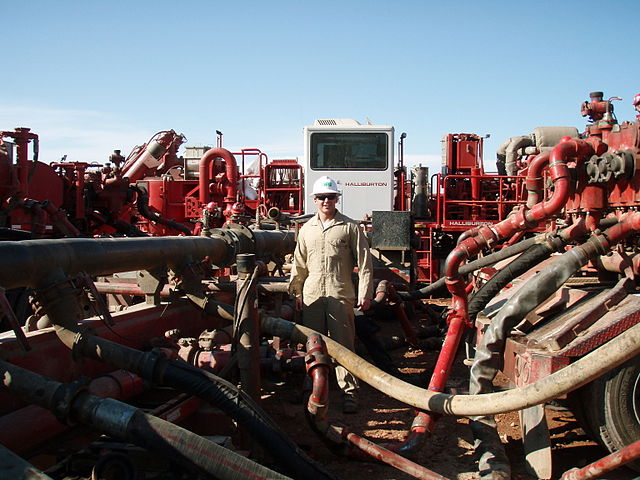Recently, the former CEO of the largest shale gas producer in the United States told a roomful of conference goers what any competent financial analysis would have revealed many years ago: the shale oil and gas industry as a whole has been destroying capital since its inception.
“The fact is that every time they put the drill bit to the ground, they erode the value of the billions of dollars of previous investments they have made,” said Steve Schlotterbeck, former head of natural gas behemoth EQT, at a petrochemical industry conference. “It’s frankly no wonder that their equity valuations continue to fall dramatically.”
But, the real news here is not that the shale oil and gas industry has from its beginning been destroying capital one well at a time. It’s that a major industry insider freed from the constraints of his former job has admitted it.
Schlotterbeck calculates that the industry as a whole has destroyed 80 percent of its value since 2008. It turns out that the so-called shale revolution is a revolution as much in investor stupidity as it is in technology, a technology that can’t seem to produce actual industry profits. The former CEO added that there have been 172 bankruptcies among exploration and production companies engaged in the shale oil and gas business just since 2015.
Now the significance of this message is as much where it was said as who said it. Schlotterbeck was addressing attendees of the Northeast Petrochemical Exhibition & Conference in Pittsburgh in mid-June. The predominant buzz at the conference was a plan to turn Pennsylvania and Ohio, which sit above large shale gas resources, into a petrochemical and plastics center similar that which exists on the U.S. Gulf Coast.
That idea is largely premised on how cheap natural gas has become as a result of the vast overproduction coming from the shale drillers. Schlotterbeck’s point, which seemed largely lost on the promoters of the scheme, is that some day low prices will have to rise substantially to keep the drillers afloat. That can happen in two ways, he explained: self-discipline or a new rash of bankruptcies that reduces production by eliminating companies.
Either way, prices will rise significantly, undermining the “cheap gas” meme that is impelling the vision of a petrochemical wonderland in Pennsylvania and Ohio.
That means less supply and higher prices, which usually go together. What will vast investments in petrochemical refineries look like then?
The same shortsightedness is taking place in the U.S. utility industry which keeps adding baseload natural gas power plants to its mix. There can be no argument that the switch to natural gas and away from coal has been central in reducing greenhouse gas emissions in the United States. But burning natural gas still emits greenhouse gases, and the emphasis on natural gas in electricity production has held back investment in renewables that are far lower in their carbon footprint.
What is likely to catch the utility industry by surprise is the same thing that will catch the new petrochemical operators near the Marcellus and Utica Shale natural gas deposits in Pennsylvania and Ohio by surprise: much higher prices for natural gas.
The simple fact is that both industries are basing their futures on extremely optimistic assumptions about the prices and supply of natural gas. This independent detailed analysis of both shale oil and gas based on actual well histories explains why these assumptions are unrealistic. The short version is that the exploration and production companies will use up their “sweet spots” and then move on to much more difficult deposits that will require far more resources to drill and produce and therefore require significantly higher prices. All of this could happen by the mid-2020s.
Contrary to the wildly optimistic projections of the U.S. Energy Information Administration of continuously growing natural gas supplies through 2040, natural gas production from shale gas wells then is likely to be only a fraction of what it is today.
That would imply a lot of worthless or at least devalued utility and petrochemical infrastructure and a lot of unhappy investors.
Understanding this outcome as likely does not require a paranormal ability to see the future. The evidence is right in front of us now in the balance sheets and income statements of the shale oil and gas companies of America. The industry’s financial condition is in shambles because it simply can’t make money with prices this low. It follows that we cannot reasonably expect investors to suffer continuous losses between now and mid-century in order to subsidize the utility and petrochemical industries with cheap natural gas.
That was Schlotterbeck’s point, but few people at the conference or in the affected industries seem to be able accept his obvious conclusion.
Photo: Mixing water with fracking fluids to be injected into the ground (fracking). Joshua Doubek (2011). Via Wikimedia Commons https://commons.wikimedia.org/wiki/File:Process_of_mixing_water_with_fracking_fluids_to_be_injected_into_the_ground.JPG






